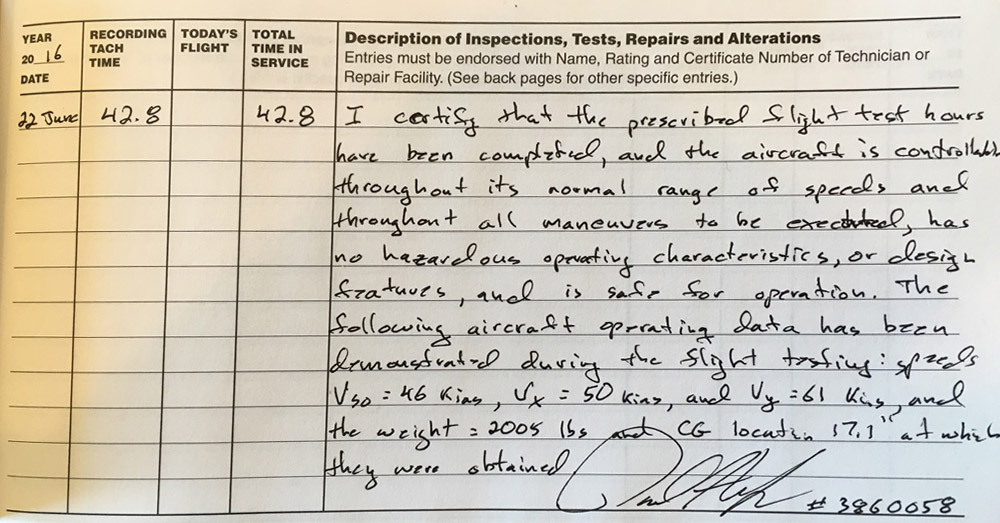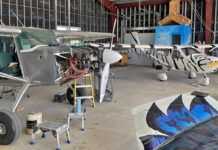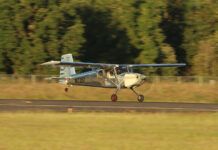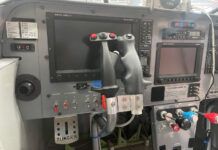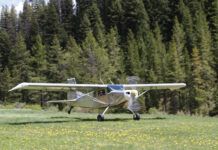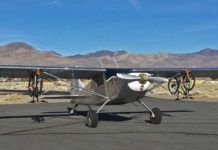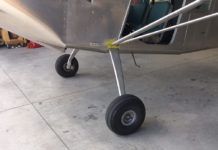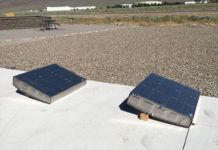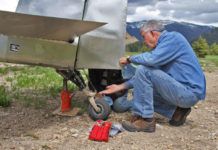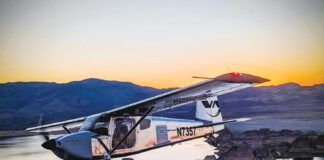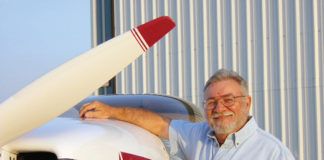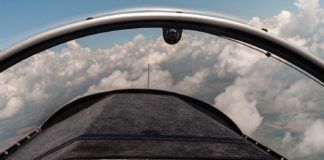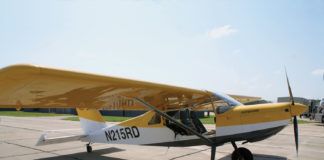With a marathon fight of nearly four hours to gather cruise performance data (take advantage of the smooth air when you can get it!), my wife nudged the Tundra’s Hobbs meter to 42.8 hours. Having completed the required testing to assure that the airplane is controllable and has no undesired flight characteristics thought its speed, weight and CG range, and having determined Vso, Vx, and Vy, we made a logbook entry formally taking the airplane out of Phase 1 flight testing. The airplane now resides in that never-expiring “Phase 2” that we all consider to be normal operations – which it is for the life of the airplane.
But does that mean that testing is completely finished? Not on your life! We still haven’t connected the autopilot servos – those need testing. The airplane is designed for door-open flight – haven’t tested that yet! Still tweaking that fuel flow constant – getting close, but we’ll play with it just a little more. And I haven’t had a chance to do the full variety of takeoff and landing testing that I want to complete – especially since this is a bush plane, and we could be going into some pretty short and rough places. And we have been concentrating on the flight characteristics so much that we haven’t fully explored the full SkyView panel to the point that we understand all of its operations and characteristics. Well beyond the minimum for safe flight, of course… but there is a lot left to learn.
There is a reason, really, that the FAA always considers an Experimental aircraft to be in a testing phase – there are always things we haven’t discovered, things we haven’t fully sorted out. If we make significant changes, we might even put the airplane back into Phase 1 for the required number of hours (check your operating limitations and your local FSDO). But even if we keep the configuration the same, we are still learning. Demonstrated maximum crosswind limit? That’s a tough parameter to nail down because we can’t always choose our winds. And we learn tricks along the way – better ways to slip, new ways to get it off the ground quickly.
Lots to learn, lots to understand, and you thought the education part was done? Keep on testing, keep on learning – and keep on having fun!

